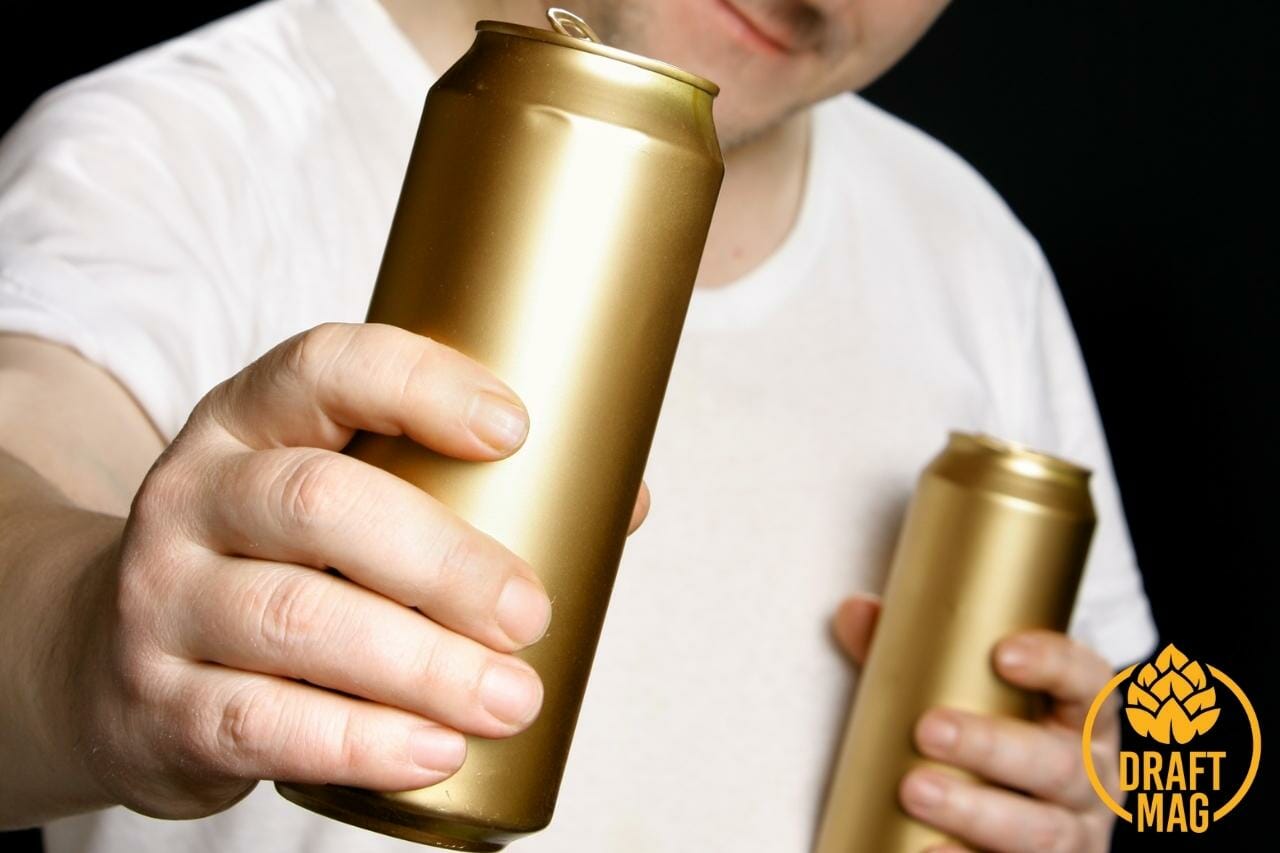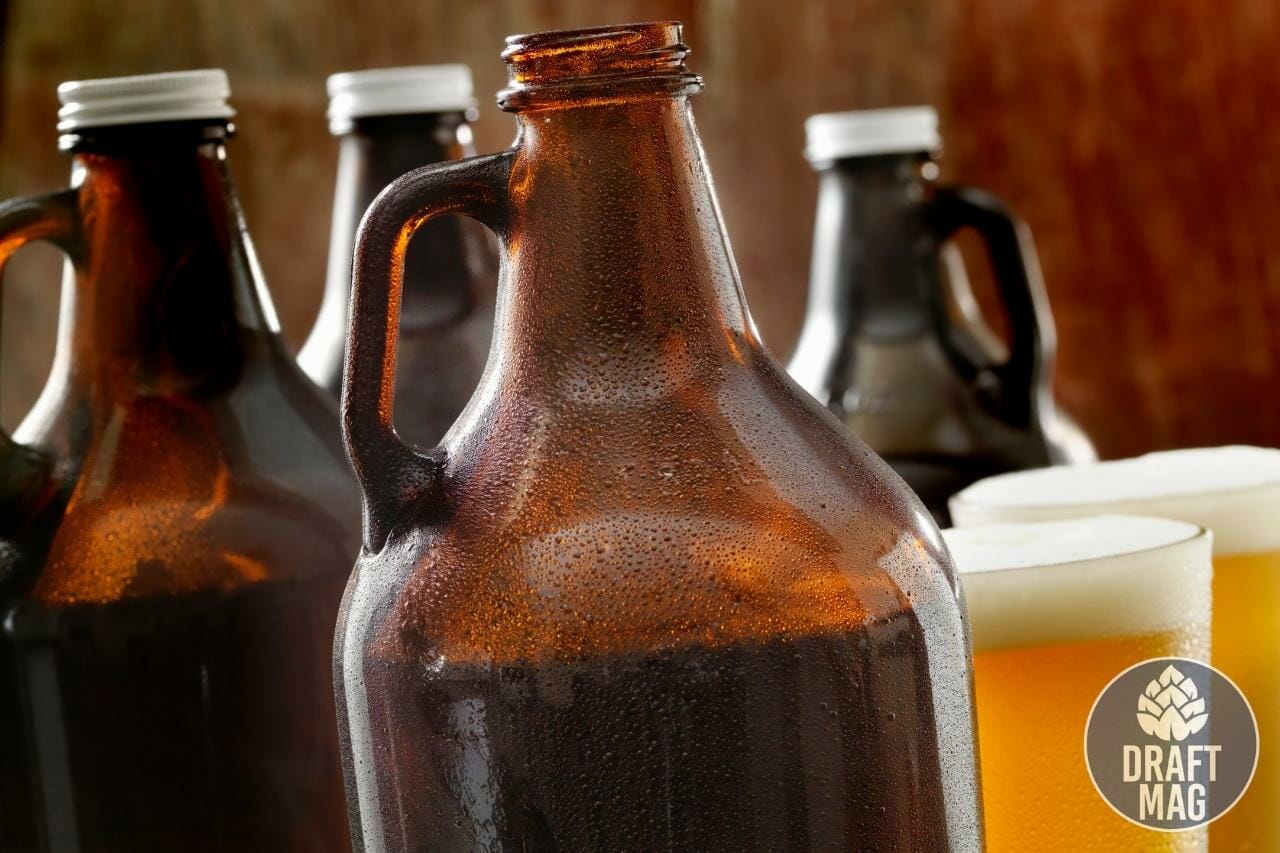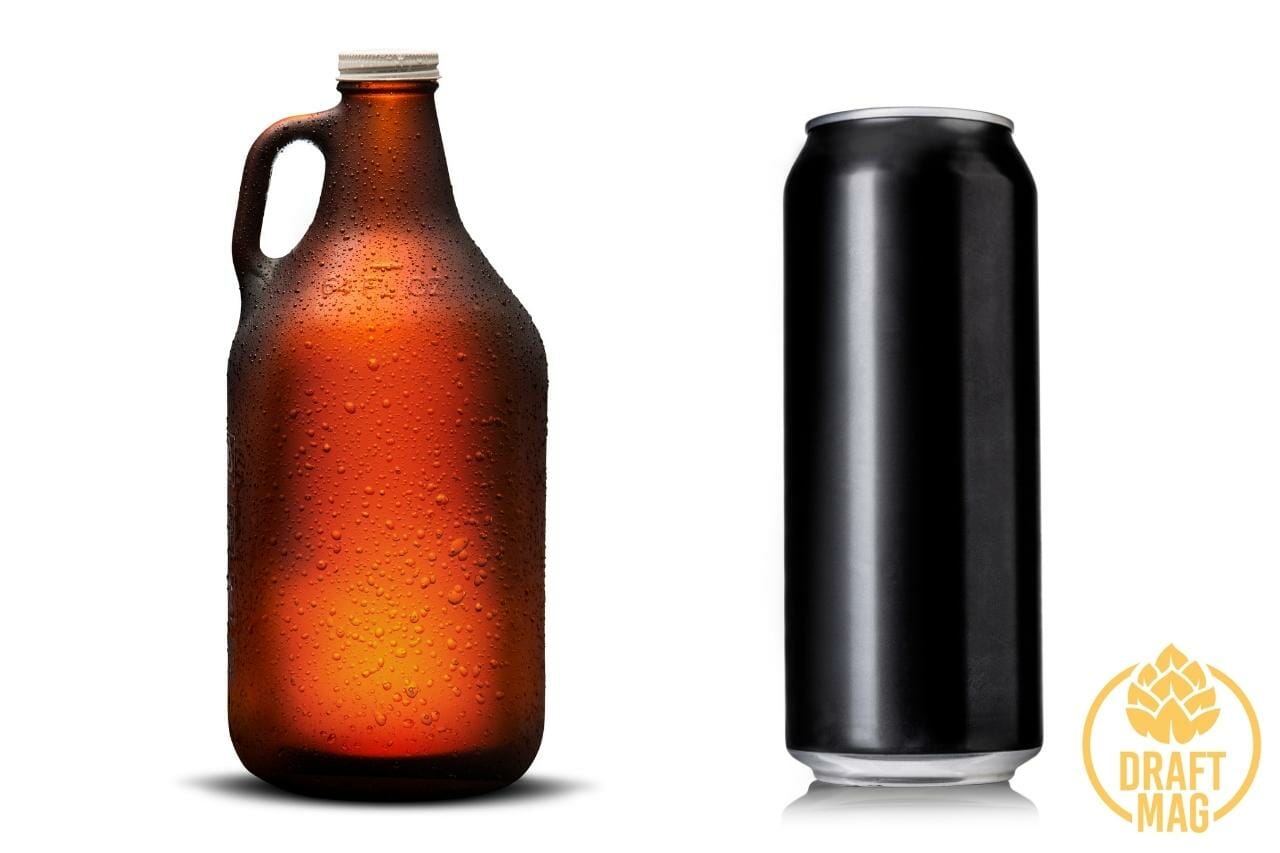Crowler vs Growler: What Are Their Major Differences?
The crowler vs growler comparison always comes down to the available size. But there are several other differences between crowler and growler that you should know about.

We will examine them in this article to help you select the best choice for your needs.
Crowler vs Growler: Comparison Table
The following table summarizes the difference between crowlers and growlers.
| Specs | Crowlers | Growlers |
| Size | 32 ounces | 64 ounces |
| Packaging Material | Aluminum | Glass |
| Shelf-Life | Two to three weeks | Three to five days |
| Reusable | No | Yes |
| Cost | $9 – $12 for a new crowler | $20 to $30 for a new growler |
| Pouring and Sealing Process | Poured and sealed with a bottling machine | Hand-poured and sealed |
| Maintenance | None | Needs cleaning between refills |
What Are the Differences Between Crowler and Growler?
The main difference between a Crowler and a Growler is in their size. Growlers mostly come as 64-ounce containers, while crowlers are always 32 ounces. While the size of a growler and its reusability are some of its perks, crowlers’ advantage lies in its disposability and affordability.
What Is Crowler Best For?
Crowler is best used for campgrounds, beaches, pools, parks, public festivals, and bike paths.
-
Features of Crowler
– Size
A crowler is a 32-ounce beer conveyor, giving you up to two full pints of beer.
– Material
A crowler comes in lightweight aluminum cans that help cut down shipping costs. Moreover, the beer can stay fresh for a longer period. This also translates to being able to pick up many crowlers for lesser costs than one growler from the brewery. You won’t have to worry about carrying a heavy beer container.
– Container Upkeep
Crowlers are intended for single-use because resealing them is almost impossible. Thus, all you can do is rinse out the crowler and recycle it. Anyone who doesn’t have the luxury of cleaning their container clean for every refill will find this beneficial.
– Where They Can Go
You might not feel any taste difference between growlers and crowlers. However, their destinations differ. This difference tilts towards the legal aspect. Campgrounds, beaches, pools, parks, public festivals, and bike paths often prohibit glass. Thus, these places are perfect for cracking open a crowler.
Since crowlers can have zero light penetration and no oxygen intake, they are superior to growlers. These cans are preferred for shipping, and they are also excellent for long-term storage.
– Pricing
One of the biggest deciding factors when choosing between a crowler or growler is the price. While the fills are the same, the cost of each container is different. Crowlers are generally less expensive than growlers. This is because the material cost is relatively low.
Some breweries sell a crowler for little to no cost. Remember that crowlers are intended for one-time use, so this generally affects the overall price as you need to get new ones repeatedly.
What Is Grower Best For?
Grower is best for all-night indoor and garden parties that require a lot of beer as it can hold twice as much as what a crawler can carry.
-
Features of Grower
– Size
There is a bit of flexibility with growlers whenever you need some more beer. The ounces in a growler can be either 32 ounces or 64 ounces. So, you can get twice as much beer as you will get with a crowler.

A full growler will give you around four pints of beer. You can get approximately five or six glasses from a growler if you don’t fill the pint glass all to the top. You will find the brown glass jugs (plain or with printed logos) at most craft breweries. Other breweries run occasional specials where they promote their growler and charge for only the beer.
– Material
A growler often comes as a glass. However, there are other variants made with stainless steel or ceramics. This usually affects the maintenance and where the container goes.
– Container Upkeep
Growlers require repeated cleaning. Otherwise, you will start seeing foamy residues building up in the container. This will affect the quality of the craft beer you plan to enjoy.
The following tips will help you keep your growler in the best conditions:
- Store the growler cold until there is a chance to clean it. This will limit bacterial growth.
- Triple-rinse your growler with hot water to keep it clean.
- Air-dry the growler after rinsing. Ensure to do this upside down to prevent moisture from sitting inside your container and prevent bacterial growth.
- Prevent stagnant air from developing in your growler by leaving the cap off.
– Where They Can Go
In a crowler vs growler debate, shipping is another factor regarding destination. Homebrewers often prefer to trade beer growlers in the mail. Growlers are often shippable. However, some people argue that the growlers get to the destination with partial flatness.
– Pricing
Growlers have flexible pricing. Breweries generally begin with one-time charges for the container itself. Then, additional costs for the filling will follow. On the flip side, a 64-ounce growler will be your preferred choice when you need more beer.
What Is a Crowler?
A crowler is a 32-ounce vessel that helps to keep your beers fresh until you are ready to drink them. It is an aluminum can that opens just like a regular beer can. You can refer to it as a howler of beer goodness in a sealed metal container. The secret of a crowler is that keeping the beer sealed in a metal can will help it remain fresher for a longer period.
– Other Advantages
A crowler of beer will essentially also not have any issues with light exposure, as you would find with glass jugs. When you keep the cans unopened, the contents will remain fresh for some weeks, which is an edge over its counterpart. Crowlers are often excellent options because they remove the need to plan.
They are more travel-friendly, allowing you to take some lovely beer home from your vacation. You can even stash your favorite beer in your backpack on your way to a hike.
Moreover, the version of the beer you get in a crowler will be much lighter than in a glass. A downside to them is that they are not reusable or resealable. So, they are not prominent in smaller breweries.
What Is a Growler?
A growler is a 32- or 64-ounce beer carrier, the largest take-home unit for beer lovers. Craft breweries commonly use this means to sell draft beers for carryout. Growlers are often brown glass jugs. However, some variants may come in stainless steel or ceramic materials. Unopened beer growlers can stay fresh in your fridge for up to five to seven days.
– Other Advantages
You can also buy a generic growler and personalize it to your taste. Stainless steel growlers are insulated. They are also stronger and more durable than the glass versions. Filling a new growler will cost about $20 to $30, depending on the type of beer.
Other Factors To Consider
The most important factor to consider when choosing between these beer containers is quality. Beer packaging will always have a significant impact on the quality of beer. Breweries worldwide have found it challenging to keep their beers tasting fresh from the tap. The quality of packaged beers diminishes as they sit on the shelves for a long time.
The same is the case when you open a beer growler at a party and close it. This exposes the beer to oxygen and causes it to oxidize rapidly. There is a remarkable difference in the beer quality between crowlers and growlers. Light can pass through the glass growlers, leading to skunked beer.
– Why Not Get Both?
It is important to note that crowlers and growlers complement one another. Breweries are better off offering both packaging types for selling their beers. Thus, your choice will depend on your preferences and current needs.
What Are the Other Beer Containers Available?
Other popular beer containers include the following:
- Howler – This is a 32-ounce vessel that yields about two pints of beer. It looks like a smaller version of the growler and sometimes like big canning jars. They are good choices if you won’t finish a growler within a few days.
- Bomber – This is a 22-ounce bottle, often sold as singles at breweries. Some craft breweries also sell prefilled bombers for rare beers and special releases. A beer bomber is best shared with your friends over a sumptuous meal.
FAQ
Do Crowlers last longer than Growlers?
It depends on various factors such as storage conditions and the type of beer. Generally, both have a similar shelf life of 2-4 weeks.
Does beer in a Growler go bad?
Yes, beer in a Growler can go bad due to oxidation and contamination. It’s best to consume it within 48-72 hours.
How long will a Crowler last in a fridge?
A Crowler can last up to 2-3 weeks in a fridge if stored properly with minimal temperature fluctuation and exposure to light.
Conclusion
Crowlers and growlers present excellent means of packaging beer, and the science behind them takes brewing to a whole new level. Transporting premium beer with them is easier than ever. Here’s a summary of this comparison:

- Crowlers are available as 32-ounce aluminum cans, while the size of a growler can be 32 or 64 ounces.
- A crowler is a sealed, airtight beer vessel made from aluminum and prevented from light exposure that keeps beer fresh for later drinking.
- A growler is the largest take-home beer unit. It is mainly made from glass but can come in stainless steel or ceramic materials.
- Crowlers are intended for one-time use because resealing is not possible. You can wash a growler every time you want to resize it.
- Crowlers tend to retain the quality of beer better because they prevent exposure to air or light, keeping the beer fresh for long.
Growlers are excellent choices when you want to throw a party, while crowlers are ideal for picking up different types of beer from a brewery and drinking at leisure. In recent years, crowlers have risen in popularity, and we see fewer growlers around. Regardless of your choice, you will have an excellent option for buying beer and enjoying it at your comfort.






